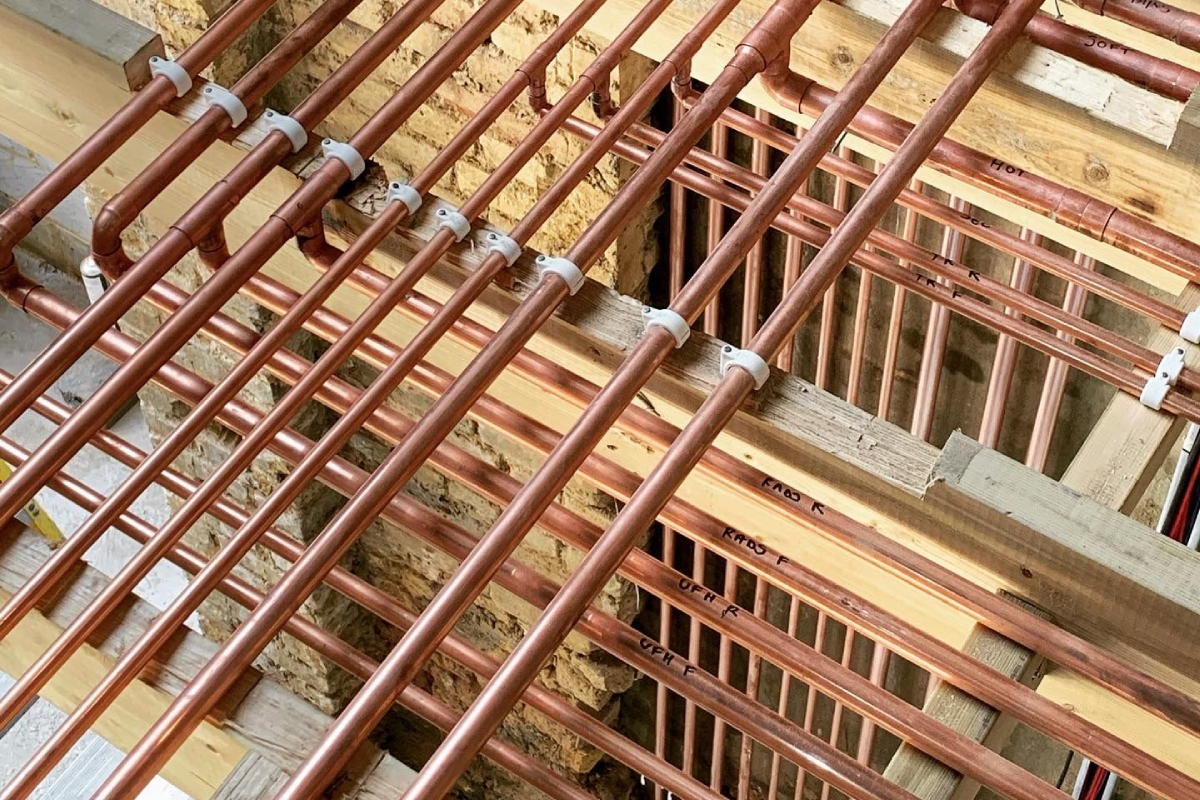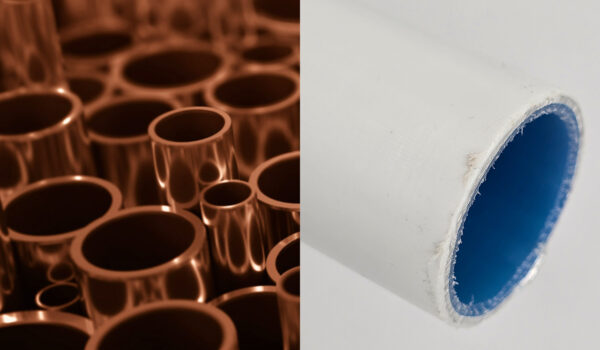From plumbing and heating to air conditioning and refrigeration, copper pipes play a vital role in our lives, transporting essential fluids that we depend upon daily.
The red metal has been key to the development of modern society, and to this day new advancements are being made in the field of copper piping.
These innovations are helping to leverage the full potential of copper’s unique properties, ensuring the material remains a staple in the plumbing and construction industries for generations to come.
Recent innovations in copper piping
Widely regarded as the material of choice for plumbing and heating, copper’s esteemed reputation within the trades continues to evolve with new innovations.
Below, we take a look at some of the new ways in which copper pipes are being used, highlighting how these advancements are reshaping plumbing and construction.
Plumbing
Copper pipes were used in some of the earliest plumbing systems, and they remain at the cutting edge of the industry today.
One of the latest trends picking up steam in the plumbing industry is the integration of traditional plumbing systems with smart technology.
Smart plumbing systems, consisting of copper pipes equipped with sensors and monitoring devices, enable real-time tracking of water usage as well as leak detection.
The smart devices are typically fitted as valves near the main water line, which then connect to mobile apps that alert homeowners to any issues that arise.
These technologies can help to reduce water waste and enhance overall system performance, leading to substantial cost savings and better resource management.
Heating
As well as carrying and distributing water, copper is also used to transport heat, helping to keep our homes and offices warm.
Copper pipes can be found in both central heating systems and heat pumps, with the latter championed as a sustainable alternative to traditional heating.
Tough yet malleable, copper can be cast into different shapes and sizes, ensuring optimal heat transfer with air-source heat pumps.
Not only that, but copper is naturally resistant to corrosion, which makes it suitable for use with ground-source heat pumps too.
In this way, copper is helping to decarbonise heating by providing the essential infrastructure upon which heat pumps are built.
The UK government has set a goal of installing 600,000 heat pumps per year by 2028, with copper pipes poised to play a big part in this push.

Refrigeration
One of the lesser-known uses of copper is refrigeration, with copper pipes an important component of cooling systems and air conditioning units.
Advancements in the design of copper pipes are now helping to unlock more sustainable and cost-effective solutions in this field.
Small-diameter copper pipes, measuring less than 10mm in diameter, have the potential to reduce the usage of refrigerants as well as the pipe material itself, in turn helping to curb system costs.
Non-toxic hydrocarbon refrigerants like propane and iso-butane, key in the move away from harmful hydrofluorocarbons, can also be safely used with copper refrigeration pipes.
It’s another example of how copper’s impressive set of properties are aiding the transition to more sustainable industrial processes.
Copper pipes: a timeless technology
Many millennia on from the first recorded use of copper pipes, the technology remains an integral part of everyday life, helping to meet our basic needs while also driving innovation across a range of industries.
Other piping materials have come and gone, but the superior quality of copper, combined with its strong sustainability credentials, give the red metal an edge in the debate between copper vs plastic pipes.
Want to learn more about the uses and benefits of copper? Check out our latest news items below.

